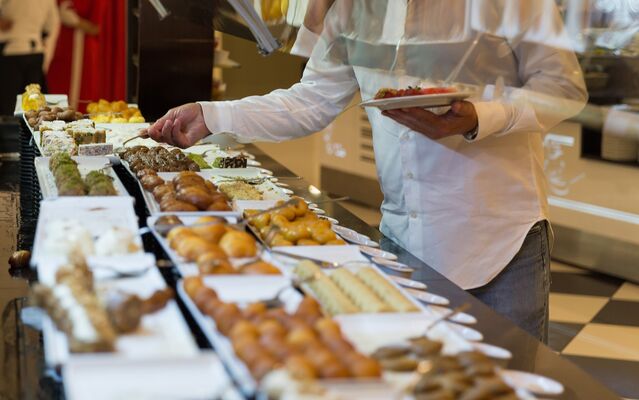Coronavirus Disease 2019
3 Rules for Navigating Your Postpandemic Possibilities
How to make better decisions when facing choice overload.
Posted April 14, 2022 Reviewed by Michelle Quirk
Key points
- After putting so many of our plans on hold during COVID-19, it can be tempting to dive headfirst into the first attractive opportunities we see.
- We need to ask ourselves whether we are seeing opportunities as they actually are or how we want them to be.
- We need to consider the long-term consequences of our choices so we don’t end up missing out or burned out.

After putting so many of our plans on hold during COVID-19, it can be tempting to dive headfirst into the first attractive opportunities we see. And after two years of pandemic life, pretty much any opportunity looks good. From the outside at least.
Emerging out of a pandemic feels a little bit like standing in line at a big buffet after you haven’t eaten all day. We’ve gone through two years of losses, sacrifices, shutdowns, and remote learning, and now we’re hungry: for seeing people and going places and doing things.
And as things are opening back up, we’re now faced with more choices than we know what to do with. We see some of our favorite foods back on the buffet table, as well as some new ones we’ve never tried.
But it can be hard to decide when we’re hungry.
So, how do we figure out what to put on our plates as we emerge from the COVID-19 pandemic? How do we know which opportunities to take and which ones to pass on?
Here are three important buffet-eating rules that can help us make better decisions as we navigate our new array of postpandemic possibilities:
Rule #1. There’s Only So Much Room on Your Plate
When you’re at a buffet, you only have so much room on your plate. If you fill your entire plate up with the first thing you see, you might end up with a plate full of green Jello salad and have no room left for your favorite stuffed shrimp. If you know there’s something better down the line than what’s in front of you right now, you should save some room.
Just like at the buffet, we have limited room on our metaphorical plates. We only have so much space in our brains, money in our bank accounts, and room in our schedule.
So, how much space should we save on our plates? That depends on what our other options are. When options are limited, we might be more willing to take what’s in front of us. During COVID-19, when we couldn’t meet in person, Zoom happy hours were like our green Jello salad. It wasn’t our favorite dessert, but sometimes it was better than nothing.
But, when options are plentiful, there’s a greater opportunity cost of taking that green Jello salad. Now that more opportunities are opening up, we have to ask ourselves not just whether the green Jello salad is better than nothing but also whether it’s better than the other options that are now at the buffet table.
What might have been worth doing during lockdown when we didn’t have a lot of options might not be worth doing now that we have more choices available.
As we navigate our postpandemic possibilities, we need to remember that just because we can put it on our plate doesn’t mean we should. There’s only so much room.
Rule #2. Not Everything That Looks Good Is Good
Have you ever eaten something and thought, That wasn’t nearly as good as I imagined it was going to be?
Sometimes looks can be deceiving. Have you ever wondered why your fast-food cheeseburger looks nothing like the commercials? It’s because the appetizing appearance of commercial cheeseburgers is courtesy of a blowtorch and shoe polish. Just because something looks good doesn’t mean it is good.
Sometimes our own minds help contribute to the deception. When we desperately want something to work out, we sometimes construct a story of how it could work out and then slowly tilt the scale until, after a while, we believe that’s how things will work out.
As we navigate our postpandemic possibilities, we need to ask ourselves whether we are seeing opportunities as they actually are or how we want them to be. Is this opportunity really a good fit for us or are we just covering a cheeseburger in shoe polish?
Rule #3. Only Take What You Really Want to Eat
When you’re at an all-you-can-eat buffet, there’s what you want to eat, and there’s what you really want to eat. What you want to eat is approximately 10 desserts. This is an immediate, in-the-moment want. It doesn’t care what happens in the future, it just wants something that tastes good for the next 30 seconds.
But you don’t really want to eat 10 desserts. Following our momentary wants is a recipe for indigestion. It’s also a recipe for burnout. Fortunately, as humans, we have the ability to think not just about what we want in the moment but also about what we really want. We can look beyond our immediate gratification and consider whether something will help us satisfy our longer-term goals.
As we navigate our postpandemic possibilities, we need to make sure we think beyond the present moment. We don’t want to say yes to every opportunity that looks shiny and fun, just like we don’t want to put 10 desserts on our plate just because they look yummy. That might be what we want in the moment, but it’s not what we really want. When we come across an opportunity, we need to think about whether it will fit with the kind of life we really want to live.
If we don’t want to end up missing out or burned out, we need to choose with the future in mind and only take what we really want to eat.
References
Frederick, S., Novemsky, N., Wang, J., Dhar, R., & Nowlis, S. (2009). Opportunity cost neglect. Journal of Consumer Research, 36(4), 553-561.




